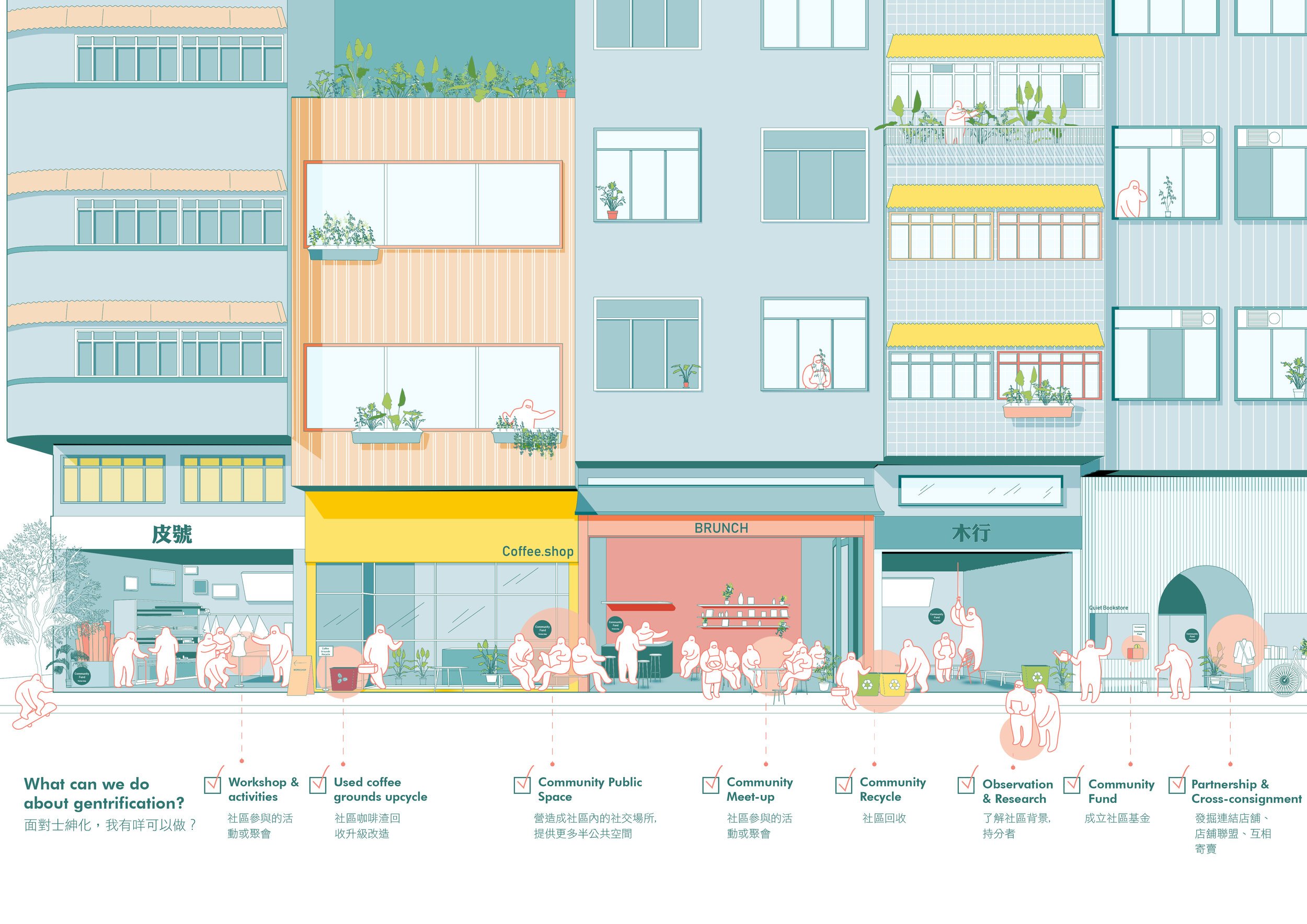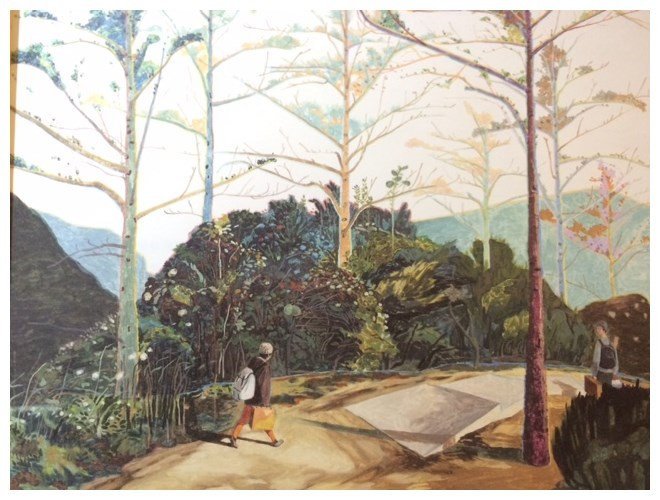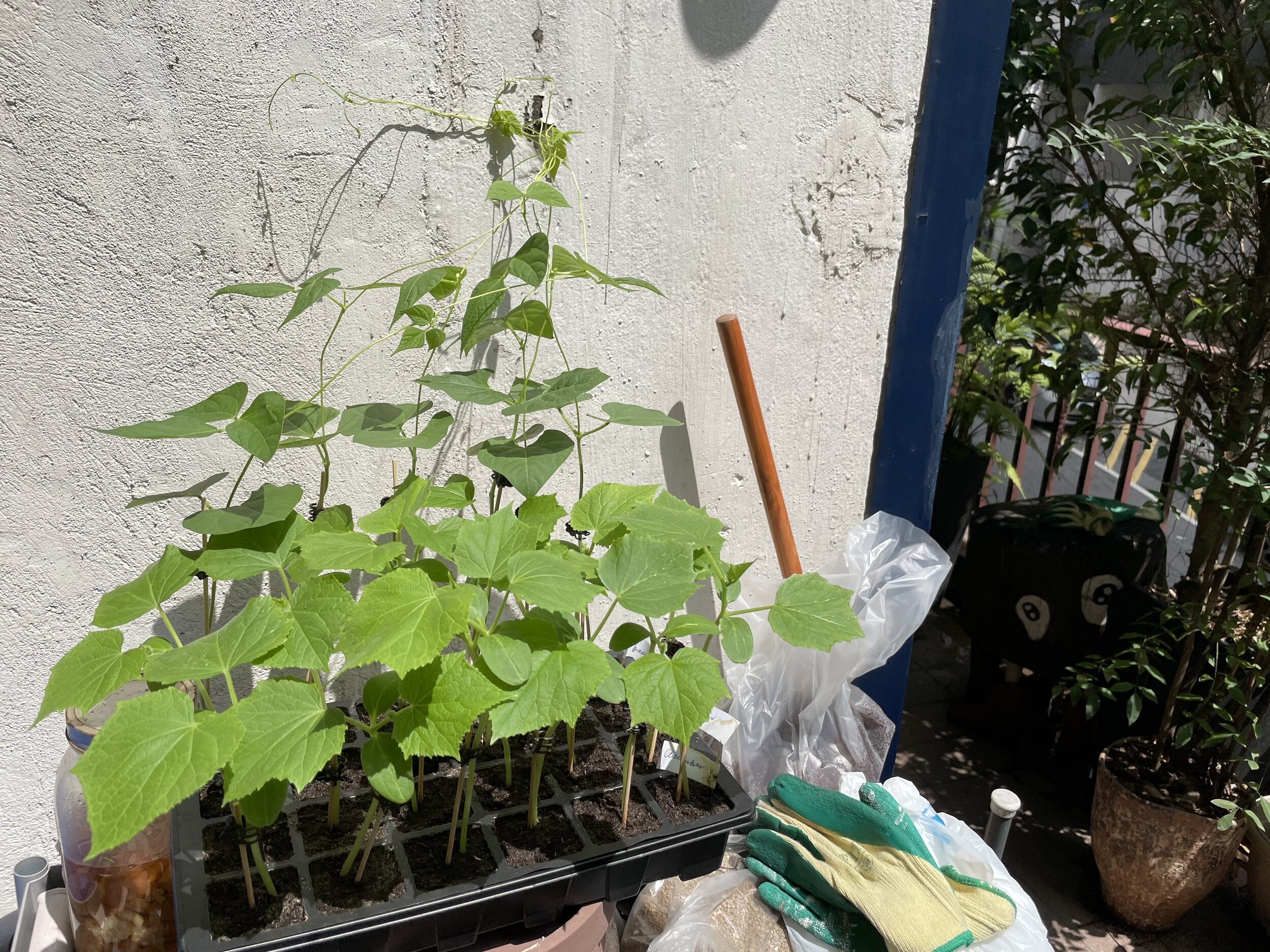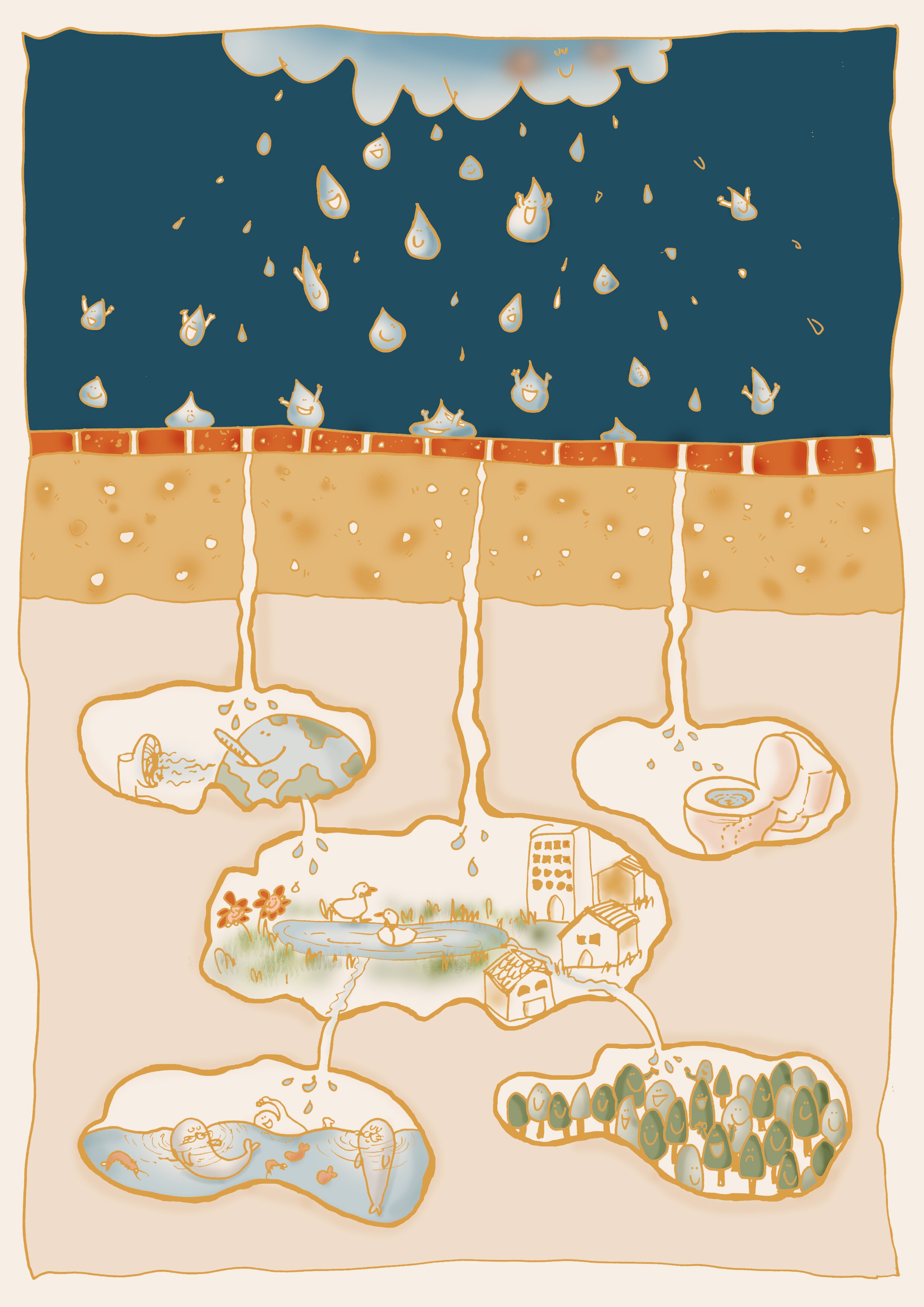面對士紳化,我有咩可以做?|What can we do about gentrification?

關於舊區士紳化,過去數篇文章,我們參考了不少城巿的案例,當中有失敗的教訓、改良的經驗,亦邀請了本地的社區藝術家和在舊區開店的創業者探討香港的狀況。固然,擁有龐大資源的政府和發展商,對社區造成士紳化的影響力最大;不過,新進駐的店舖,不論是租客或業主,也實際上參與了士紳化過程、有其角色和造成的影響。
社區更新、新舊交替,是城巿發展無可避免的過程,死氣沉沉的社區可以重新活起來,對整個社會來說當然是一件好事。在這個基礎之上,面對士紳化,有心的吉人其實毋須卻步,我們其實可以更正面、更務實地進入社區。作為希望進入舊區開店,又或是希望到舊區幫襯小店的你和我,有什麼可以做呢?以下是吉人吉事的小建議,去舊區前,不妨可以想得更多:
物色舖位時:
了解這個社區的持份者涵蓋什麼群組,了解他們的人口特徵(如年齡分佈、主要職業、經濟狀況等),以至他們的需求。例如是否長者佔多?有不少少數族裔?是否大多從事勞動工作?主婦多不多?雙職家庭居多的話,或有更大的託兒需求、外賣食肆需求。
了解舖位的背景,以及附近一帶的發展歷史,舖位對於社區來說,有否特別的意義?
空間設計:
是否有部分空間可以不止考慮商業利潤,例如咖啡店外,是否可以提供露天座位或空間,營造成社區內的社交場所,吸引更多人流之餘,也為社區提供更多半公共空間。
空間的設計,是否有彈性可舉行社區參與的活動或聚會,創造機會接觸社區內的人,了解他們的想法,這除了促進社區融合之外,同時亦能更掌握店舖的巿場定位,一舉兩得
營業期間:
店舖的出現,有否為社區內的其他店舖、尤其本地傳統小店和老店,帶來更多益處?例如可以發掘連結店舖、互惠互利的活動,甚至組成店舖聯盟;又例如,傳統店舖的商品,可否置於新店舖寄賣,甚至互相寄賣?
店舖產生的廢棄物,除了直接扔進垃圾車,是否可有對社區更好的處理方法?例如區內的咖啡店,可以統一收集咖啡渣,加工後成為肥料或除臭劑後,供給社區使用?
有心有力的店舖,甚至可以成立社區基金,廣邀區內持分者支持,集腋成裘,籌集得來的資源用於改善區內有需要的群組。
至於作為消費者的更多個你和我:
幫襯這些店舖前,可以依照上列的問題,了解這些店舖的初衷、理念,對社區發展是否友善。除了飲咖啡、打卡、消閒時間外,我們在選擇時、消費時,也可以對社區尊重更多、做得更多﹗
繪圖: Carmen Kwok
地點:香港
What can we do about gentrification?
By now we have studied several overseas cases about the gentrification of historic districts – some about failures, some successes. We also invited community artists and new ventures to speak on the case of Hong Kong. While resourceful local government and developers certainly play critical roles, upscale businesses emerging in old districts - and their landlords - may as well be catalysing the process of gentrification.
The transition from old to new is inevitable in urban development and breathing new life into a declining neighbourhood is beneficial to society as a whole. But well-intentioned entrepreneurs don’t have to cringe just for fear of getting into the broil, for we can do good for a community if we do it right.
What can we do to create or support new businesses without forcing the bourgeois ways into the neighbourhood? Here are our GUTS points for you to contemplate:
Shop location:
Understand the neighbourhood stakeholders, as well as their needs and demographic characteristics (e.g. age, occupation and finance). Do elderly or blue-collar workers dominate the area? Is there a significant number of ethnic minorities or housewives? If both parents in most families are working, the demand for childcare and takeaways may be higher.
Understand the history of the shop location and its surroundings. Do the locals hold special feelings about it?
Shop design:
Allocate an area for non-profit making purposes. For instance, an alfresco zone of a café can become a semi-public gathering place for neighbours, which may attract more customers.
Maintain flexibility while designing the space so that you can host activities or meet-ups for your neighbours. This creates opportunities for you to get to know your neighbours and their thoughts, ultimately to enhance social integration and your market position.
Business hours:
Will your shop benefit other local shops, especially the traditional ones? Explore possibilities to connect with other shops for joint promotion or even partnership. Maybe cross-consignment with traditional shops?
Is there a better way of waste handling than sending it off to the landfill? Consider joining hands with other local cafés to collect and upcycle used coffee grounds into fertilisers or deodorisers to share with neighbours.
Well-intentioned shops may even set up a community fund to unite local stakeholders and allocate common resources to help the needy in the neighbourhood.
For customers like you and me:
Try to understand the mission and vision of a shop based on the above questions. Does it have positive impacts on community development? After all, we consumers can respect and do more for a neighbourhood just by choosing the right spot for coffee, selfies or spending time.
Illustration by: Carmen Kwok
Location: Hong Kong
你可能對以下吉人吉事有興趣:
You may also be interested in these GUTS Stories:














